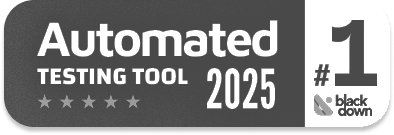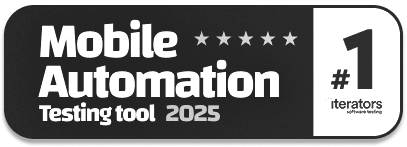Why Testers Require Domain Knowledge?
|
|
In the software universe, we often focus on the technical prowess of our testers — their ability to write code, navigate complex systems, and find bugs. But it’s not enough to just know how the software works. A great tester also needs to understand why it works, who it serves, and the real-world context it operates within. This is what domain knowledge helps with.
Key Takeaways
- Domain knowledge is a sure-shot way to set you apart from the crowd.
- Testers need domain knowledge to:
- Come up with better test cases that are relevant to the domain they are working in.
- Know what the expected system behavior is and what constitutes a defect.
- Perceive the application from the user’s perspective and then test the application accordingly.
- Partake in requirement analysis and gathering by suggesting the user’s needs through testing.
- Anticipate issues in the application.
- Whether you’re someone who is looking to enhance domain knowledge or is completely new to the domain, you can grow by:
- Directly engaging with stakeholders like product owners and developers. They know about the application.
- Read up about all the documented requirements to know more about the domain.
- Experience the application firsthand. Try to use it like an end user.
What is Domain Knowledge?
Domain knowledge is the understanding of the specific field or industry in which a product, service, or software operates. It’s the know-how about the business, its processes, rules, and the environment in which it functions. This knowledge is different from technical expertise, which focuses on how to build or run software.
For example, if you’re testing an e-commerce platform, you need to think like a shopper – understanding how discounts apply, how shipping costs are calculated, and what makes for a smooth checkout experience.
Why Testers Require Domain Skills?
So, we’ve established that domain knowledge isn’t just a nice-to-have; it’s a critical asset. But how does this understanding of the business and industry actually translate into better testing? Let’s break down the core reasons why testers who ‘get’ the domain are simply more effective.
Smarter Test Cases
Imagine trying to write a compelling story without understanding the characters or the plot. You’d just be listing events. Similarly, without domain knowledge, test case design can become a superficial exercise.
- Identifying Relevant Scenarios: A tester who understands the business can move beyond the obvious. You won’t just test if a ‘submit’ button works. You’ll consider why someone would click it, or what the system needs to do if they’ve left a mandatory field blank based on business rules. This means you are designing test cases that reflect real-world user behavior and business operations, not just technical functions.
- Hidden Edge Cases and Exceptions: Every industry has its quirks, its exceptions, and its rarely occurring but critical scenarios. These are the “edge cases” that often trip up software. A tester armed with domain knowledge is far more likely to anticipate these. They’ll ask, “What happens if a customer tries to redeem a loyalty point on an item that’s already discounted and part of a special promotion, and they’re also using a gift card?” Without knowing how these things interact in the actual business, you might never think to test such a complex, yet potentially real, scenario.
- Prioritizing What Truly Matters: Not all bugs are created equal, and not all features hold the same weight for the business. Domain knowledge empowers testers to understand the criticality of different functionalities. Is a small typo on a login screen as important as an incorrect calculation in a financial report? Likely not. If you know the business impact, it will help you prioritize your efforts. You can focus on the areas that pose the highest risk to the users or the business and make sure that critical pathways are rock-solid.
Catch Bugs and Report Them Effectively
Finding bugs is one thing. But understanding their true impact and communicating them clearly is another.
- Distinguishing Defects from Intended Behavior: This confusion often happens when a tester doesn’t fully grasp a specific business rule. Domain knowledge helps a tester quickly discern whether an unexpected outcome is a genuine defect or simply the system behaving exactly as it’s intended to. Especially if that behavior seems counter-intuitive at first glance.
- Articulating the True Business Impact: A bug report that simply says “Field X is not populating” is far less impactful than one that states, “Field X, which is critical for calculating customer credit scores, is not populating, and leading to incorrect loan approvals and significant financial risk.” Domain knowledge allows testers to translate technical glitches into their real-world consequences and helps developers and product owners understand the urgency and severity of the issue.
- Speaking the Same Language as Stakeholders: When reporting issues or discussing requirements, testers with domain knowledge can communicate using the jargon and concepts familiar to product owners, business analysts, and even end-users. This will give you an edge as it allows clearer conversations, reduces misunderstandings, and builds trust.
Better User Experience (UX)
Software isn’t just about functionality; it’s about how people interact with it. Domain knowledge is key to assessing this.
- Cultivating Empathy for the End-User: Who are the people using this software? What are their daily tasks? What challenges do they face? A tester who understands the domain can put themselves in the shoes of the actual user. They’ll naturally ask, “Is this workflow intuitive for someone who does this job every day?” or “Does this feature actually solve a problem for our target audience?” Read: UX Testing: What, Why, How, with Examples.
- Evaluating Usability and Intuition: Beyond just checking if buttons work, domain-aware testers assess whether the entire application flows logically and makes sense from a user’s perspective. They can identify confusing navigation, unnecessary steps, or missing features that would greatly enhance the user’s efficiency and satisfaction.
Team and Stakeholder Communication
Software development is a team sport, and domain knowledge makes testers invaluable players.
- Bridging Technical and Business Teams: Testers often sit at the intersection of technical implementation and business needs. With domain knowledge, they become excellent translators, helping developers understand the “why” behind a requirement and helping business stakeholders understand the technical feasibility or limitations. They can clarify ambiguities in requirements and prevent misinterpretations before code is even written.
- Contributing to Requirements Clarification: Instead of just taking requirements at face value, a domain-savvy tester can proactively ask intelligent, probing questions. They can identify gaps, inconsistencies, or even entirely missing scenarios in the initial requirements, catching potential problems long before they become expensive bugs. This proactive involvement saves time and resources for the entire team. Read: Minimizing Risks: The Impact of Late Bug Detection.
- Earning Credibility and Respect: When a tester consistently demonstrates an understanding of the business, they’re no longer seen as just “bug finders”. They become trusted advisors, contributing meaningfully to product discussions and strategic decisions. This improves the entire testing function within the organization.
Risk Identification
The best defense is a good offense, and domain knowledge is a tester’s best offensive tool.
- Anticipating Potential Problems: Every industry has its unique risks – regulatory fines, security vulnerabilities, common operational errors, or even seasonal usage patterns. A tester with domain knowledge can anticipate these potential pitfalls. They might know, for example, that a financial application needs rigorous testing around year-end closures due to specific accounting rules, or that a retail system will experience peak load around holiday sales. Read: Automated Testing in the Financial Sector.
- Guiding Development Decisions: By understanding the business context and potential risks, testers can provide valuable insights that influence design choices and architectural decisions. They can advocate for features that mitigate known risks or highlight areas where robustness is paramount, ensuring the software is built to withstand real-world pressures.
How Testers Can Acquire Domain Expertise
How can a tester, especially one new to an industry or project, actually acquire this crucial understanding? It’s not about memorizing a textbook; it’s about active engagement and a curious mind. Here’s how you can become a true domain detective:
Stakeholders: Your Living Textbooks
The fastest and most insightful way to learn about a domain is from the people who live and breathe it every day.
- Ask Questions – Relentlessly (but Politely!): Don’t be shy! Product owners, business analysts, subject matter experts, and even end-users are goldmines of information. When you encounter a feature, a term, or a workflow you don’t fully grasp, ask: “Why is this feature important for our users?”, “What’s the typical workflow for a customer doing X?”, or “Could you explain what ‘amortization schedule’ means in simple terms?” Your curiosity shows you’re invested, and people are generally happy to share their expertise.
- Attend Business Meetings with an Open Mind: While technical meetings are your bread and butter, make an effort to attend broader business meetings – requirements gathering sessions, sprint reviews where product managers discuss roadmaps, or even sales and marketing briefings if permitted. These meetings often reveal the “bigger picture,” the market pressures, and the ultimate goals that drive the software’s development. You’ll hear the language, the priorities, and the challenges directly from the source.
Use Industry Documentation: The Written Wisdom
Beyond conversations, there’s a wealth of written material that can accelerate your domain learning.
- Immerse Yourself in Project Documentation: Start with the obvious: Business Requirements Documents (BRDs), User Stories, Use Cases, and any functional specifications. Don’t just skim them for testing points; read them with the intent to understand the business problem they’re trying to solve. Look for flowcharts, process diagrams, and glossaries of terms.
- Explore Industry Standards, Regulations, and Best Practices: Many domains are governed by specific rules. In finance, there are compliance regulations; in healthcare, HIPAA is critical; in e-commerce, payment processing standards are key. Research these. Understanding the regulatory landscape helps you identify potential legal or ethical pitfalls the software must avoid. Also, look at what’s considered “best practice” in that industry – what do successful competitors do?
- Analyze Competitors: How do other companies in the same domain solve similar problems? What features do they offer? What are their user flows like? Analyzing competitor products can provide valuable insights into user expectations, common functionalities, and potential areas for improvement (or pitfalls to avoid) in your own software.
User Empathy: “Walk a Mile in Their Shoes”
The most profound understanding often comes from experiencing the domain yourself, as if you were the end-user.
- Shadow End-Users (if possible): If your company allows it, spend time observing actual users interacting with existing systems or performing their daily tasks. Seeing their struggles, their shortcuts, and their expectations firsthand is incredibly enlightening. It gives you a real-world perspective that no document can fully convey.
- Use the Application as an End-User Would: Don’t just execute test cases. Spend time using the software as if you were a customer or an employee performing a real task. Try to accomplish a goal from start to finish without following a specific test script. This “exploratory” use can reveal usability issues, confusing flows, or missing features that only become apparent when you’re truly invested in completing a real-world objective. Read: How to Automate Exploratory Testing with AI in testRigor.
Self-Learning and Improvement
Domain knowledge isn’t a one-time acquisition; it’s an ongoing journey.
- Seek Out Online Courses, Industry Publications, and News: The internet is a treasure trove. Many industries have free or paid online courses that offer foundational knowledge. Subscribe to industry newsletters, read blogs from experts in the field, and follow news relevant to your domain. Staying current helps you anticipate future changes and challenges.
- Network with Domain Experts (Internally and Externally): Don’t just talk to the people on your immediate project team. Connect with long-standing employees, sales teams, customer support, or even external industry groups. They often have historical context and insights into evolving trends.
Practical Experience
Ultimately, some of the best learning happens directly on the job.
- Volunteer for Domain-Specific Projects: If you have a choice, opt for projects that challenge you to learn a new part of the business or deepen your understanding of an existing one. The hands-on experience of testing in that context is invaluable.
- Ask for Diverse Assignments: If you’re stuck testing the same narrow feature repeatedly, ask if you can contribute to other parts of the application or different projects within the same domain. Broader exposure will lead to a more holistic understanding.
Conclusion
Domain knowledge is like trying to solve a puzzle – knowing the picture on the box (the domain) helps you understand how the pieces fit together and what’s most important to focus on. It transforms a tester from a gatekeeper of quality into an active participant in building truly successful, impactful software. Without domain knowledge, a tester might miss critical issues or misunderstand the purpose of certain features.
| Achieve More Than 90% Test Automation | |
| Step by Step Walkthroughs and Help | |
| 14 Day Free Trial, Cancel Anytime |












